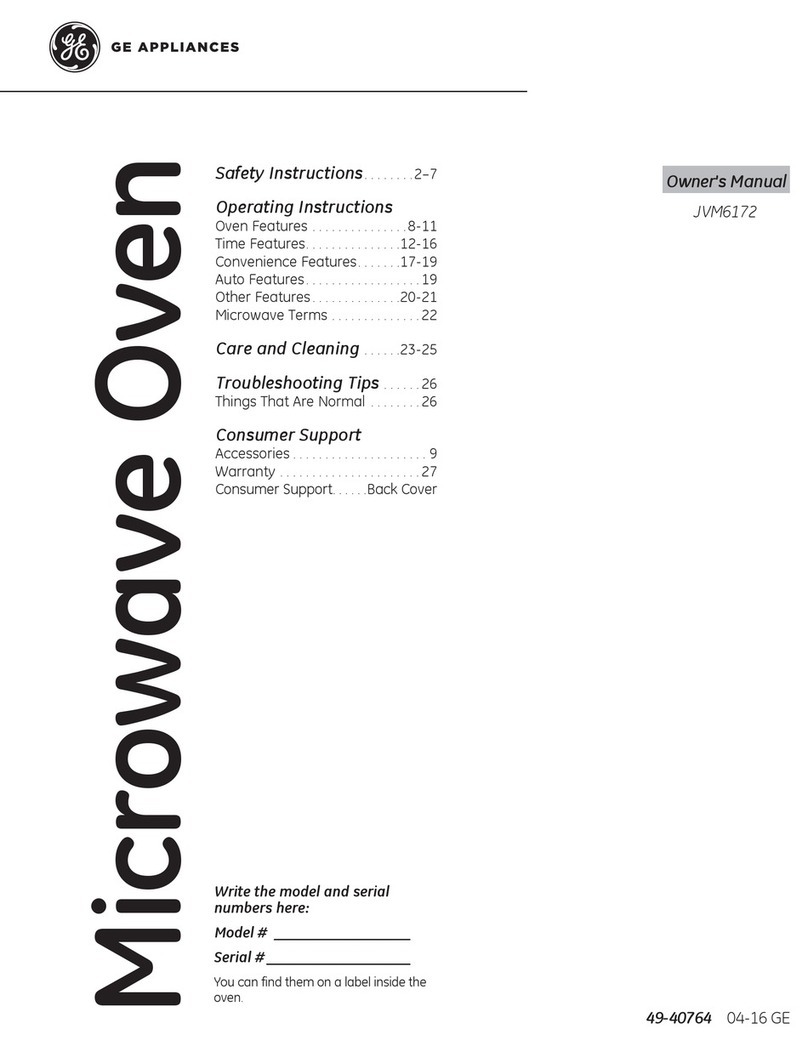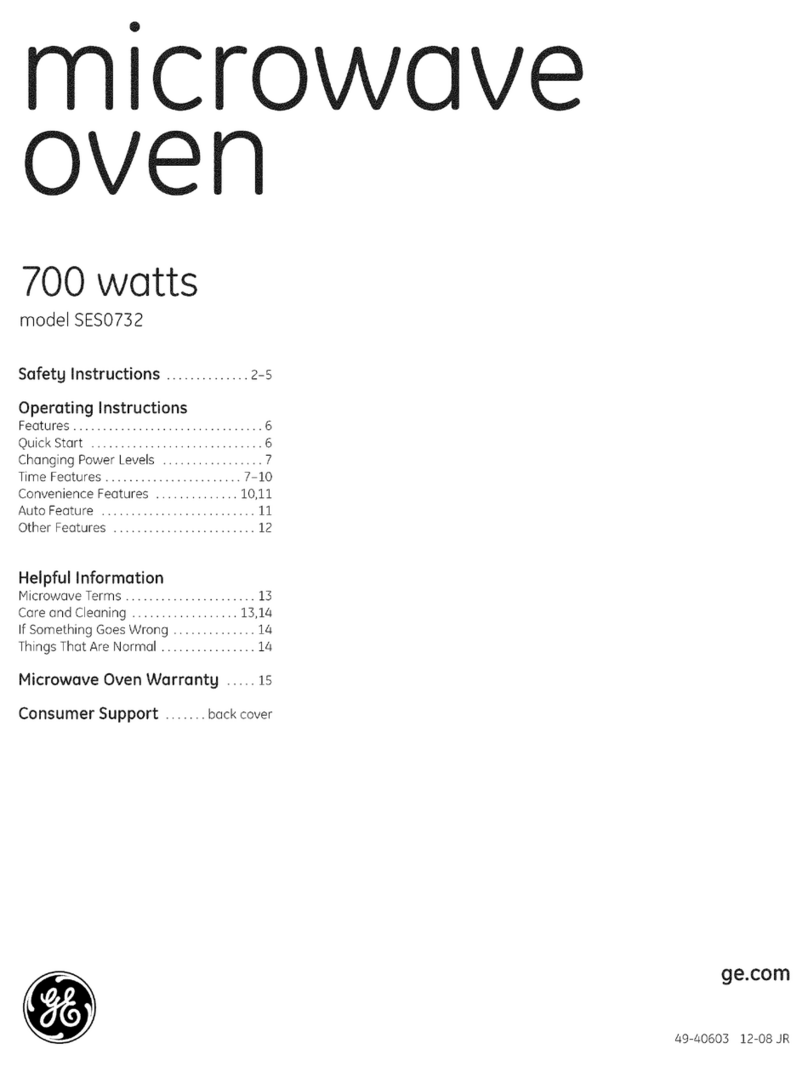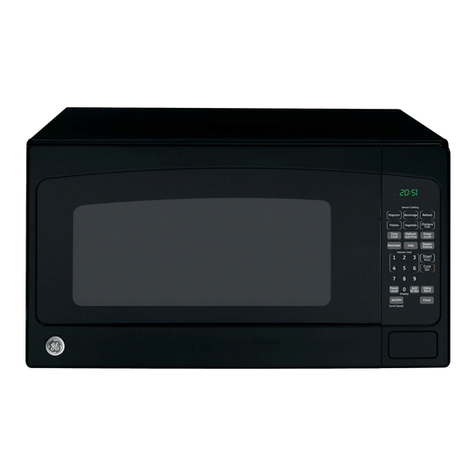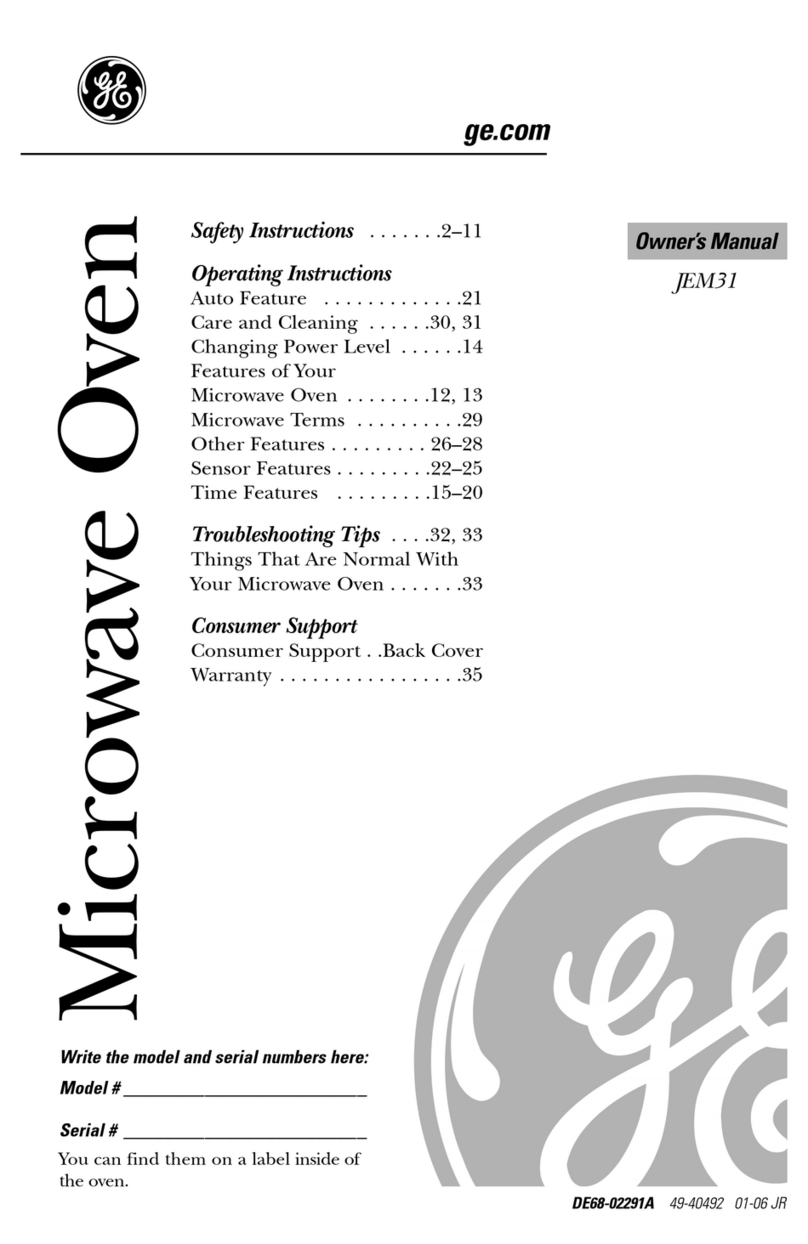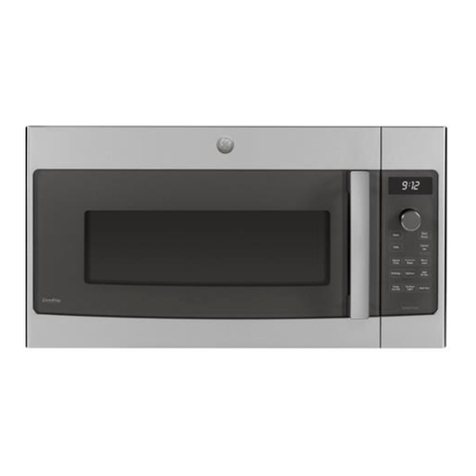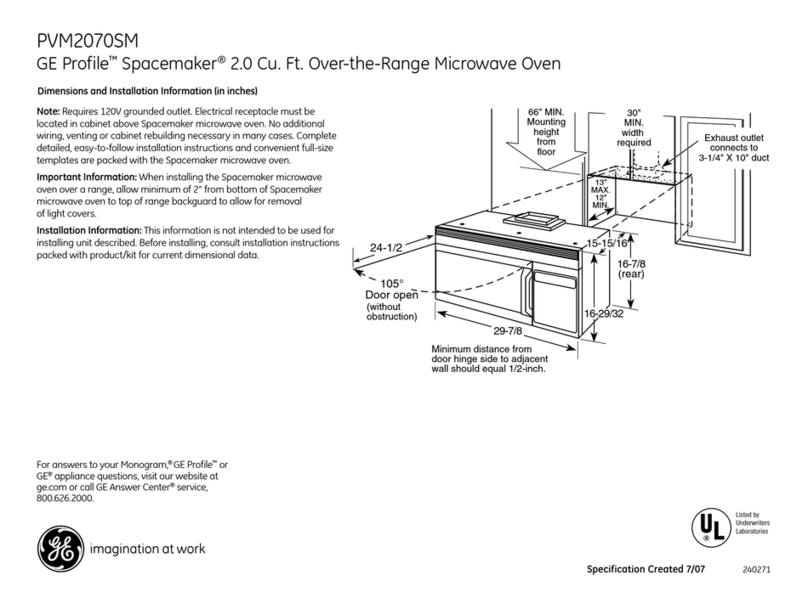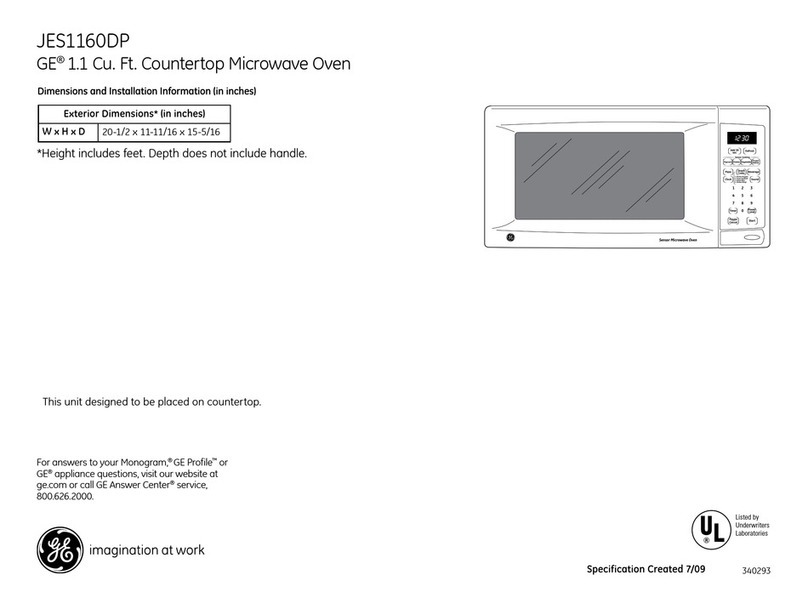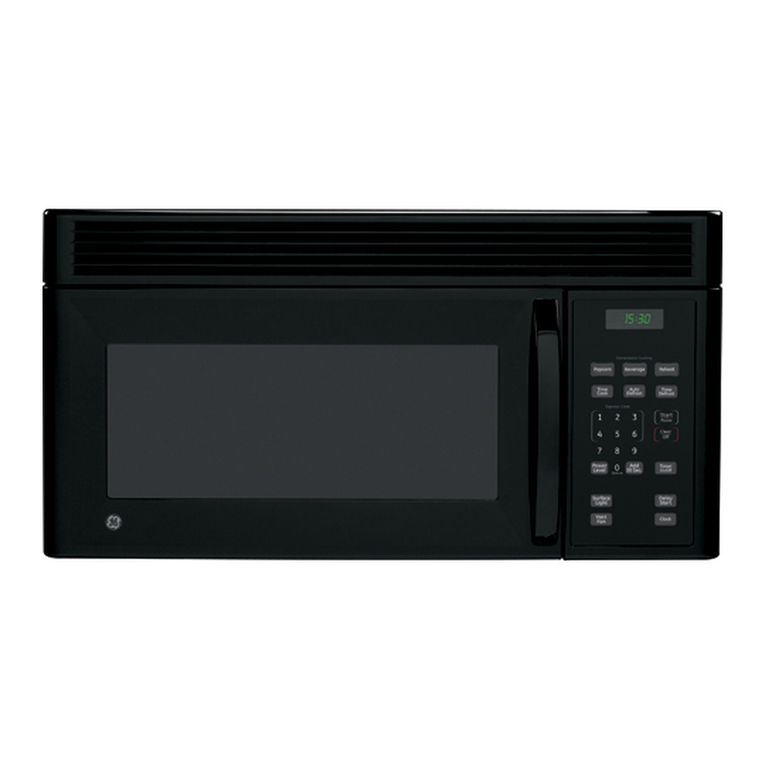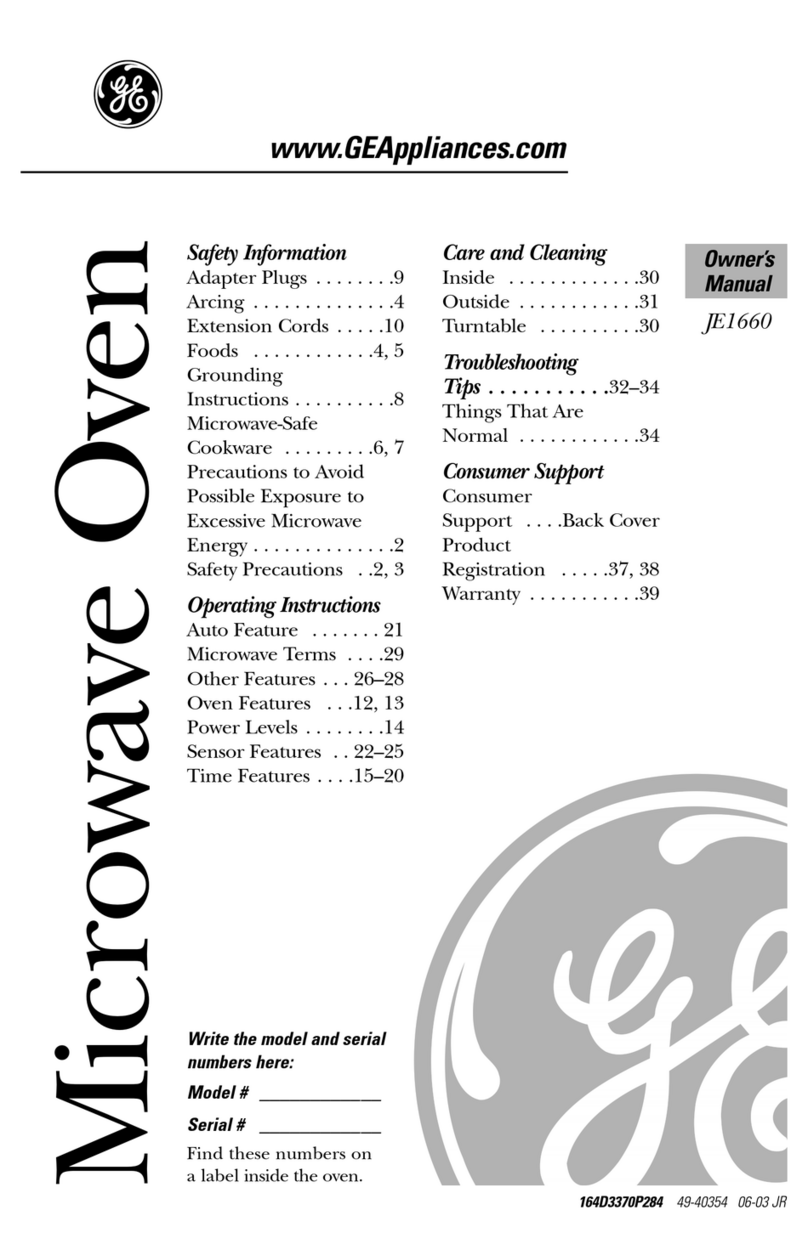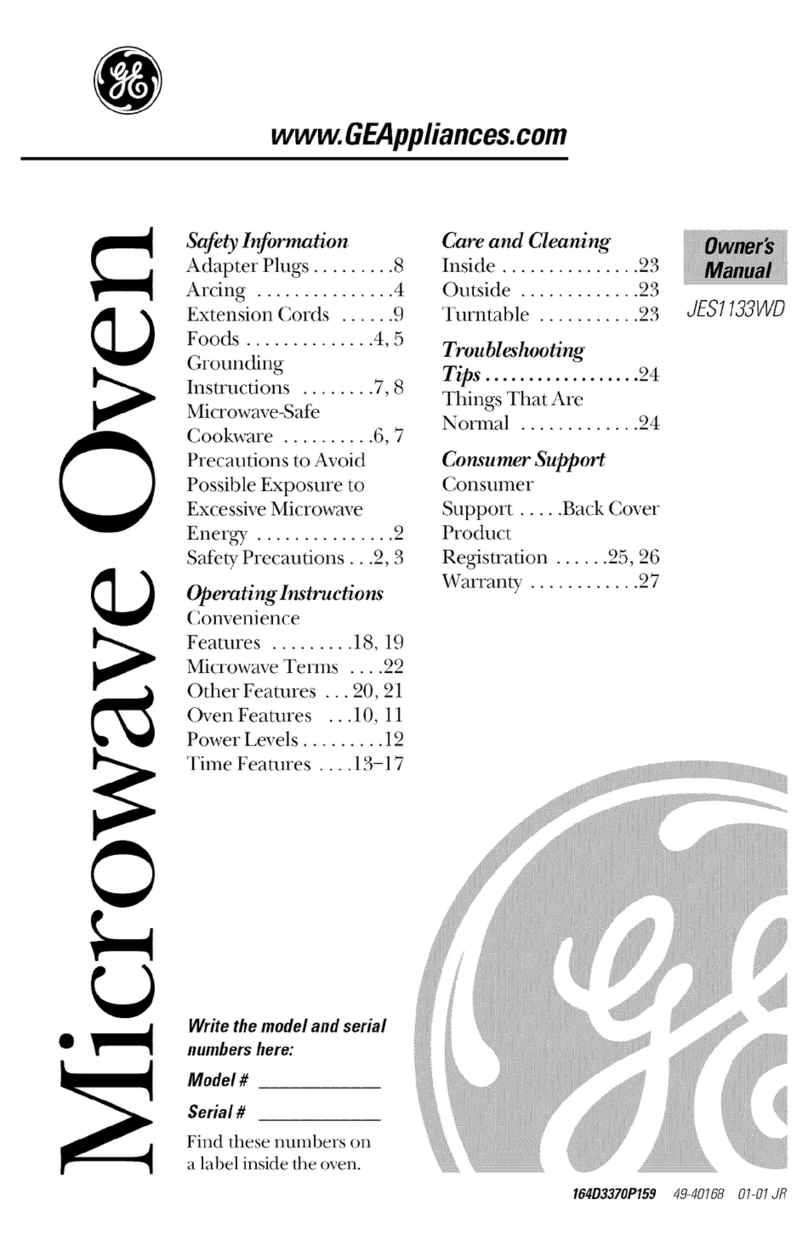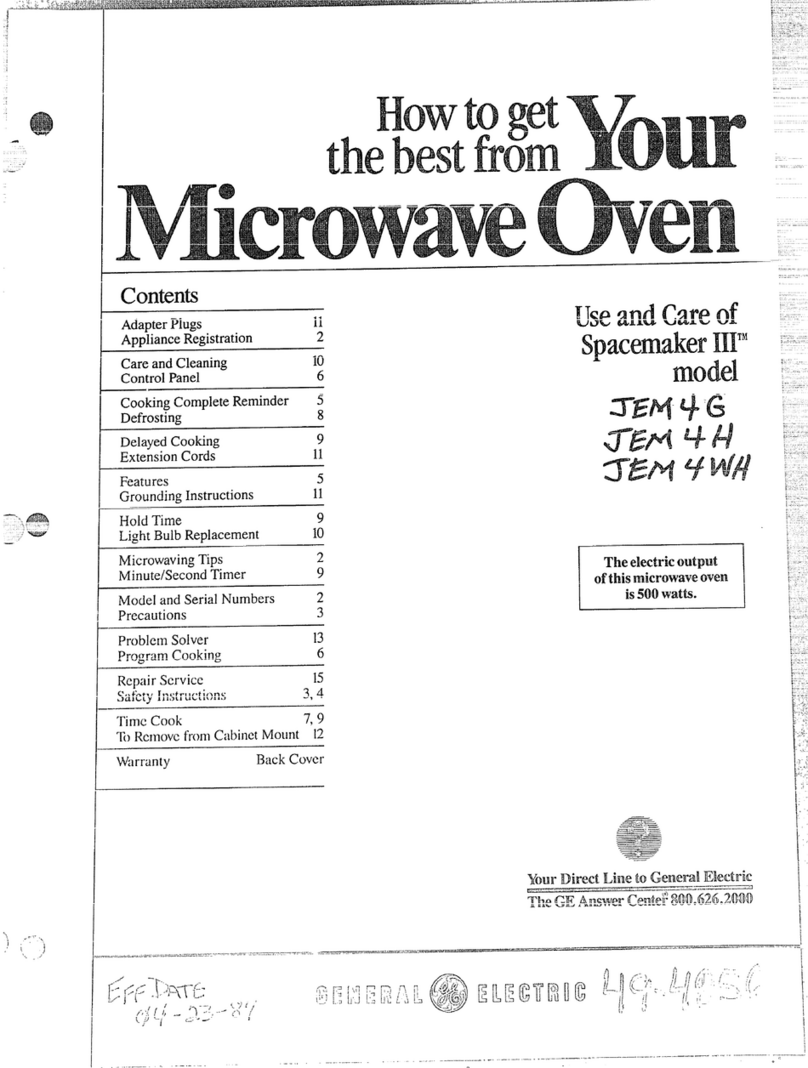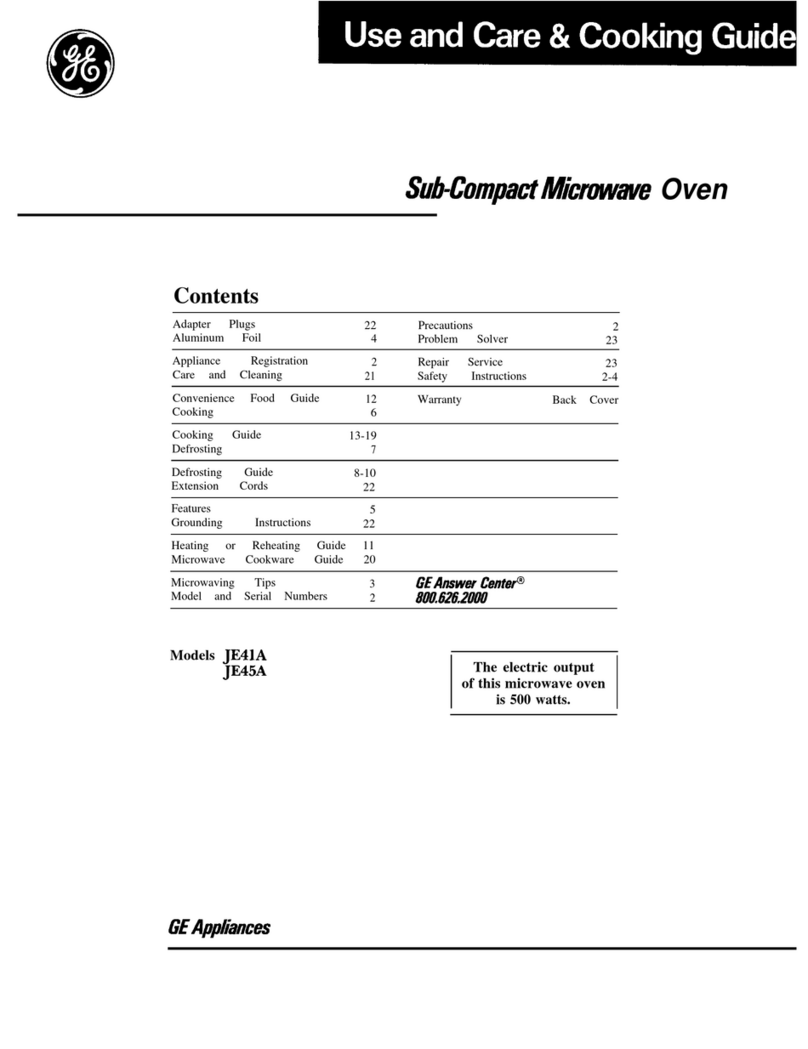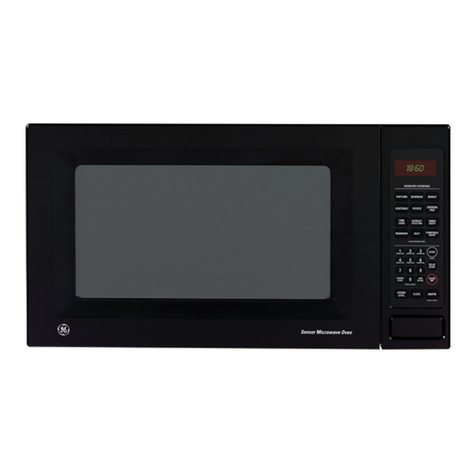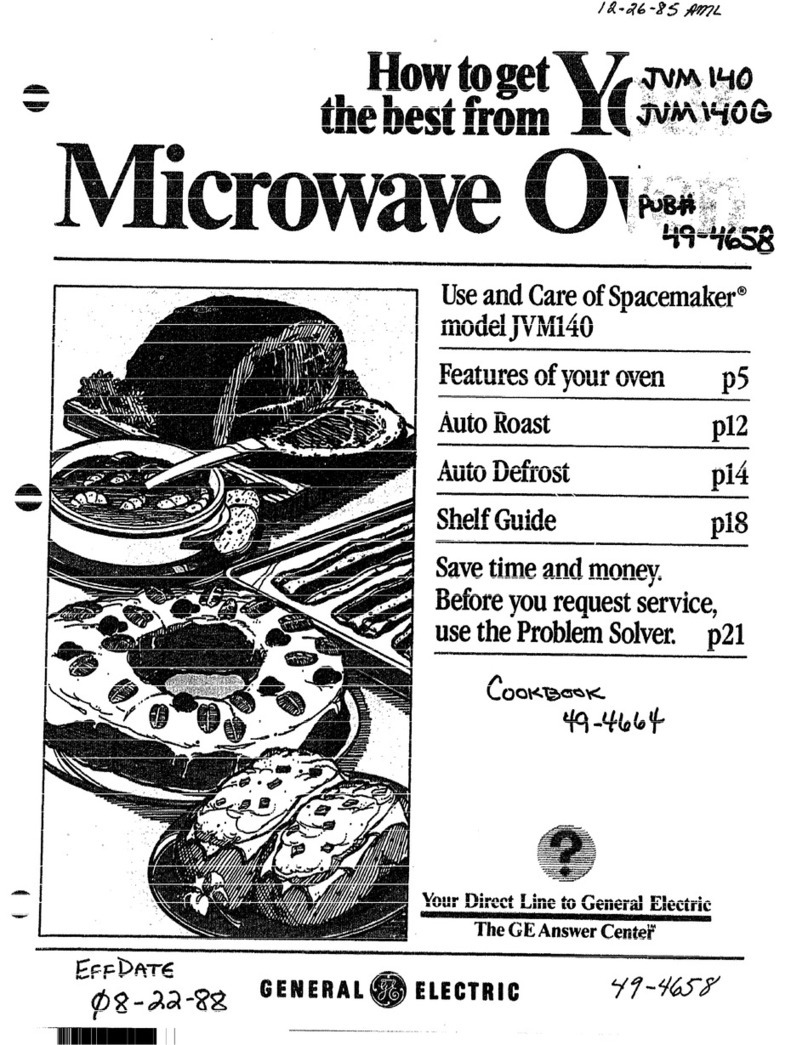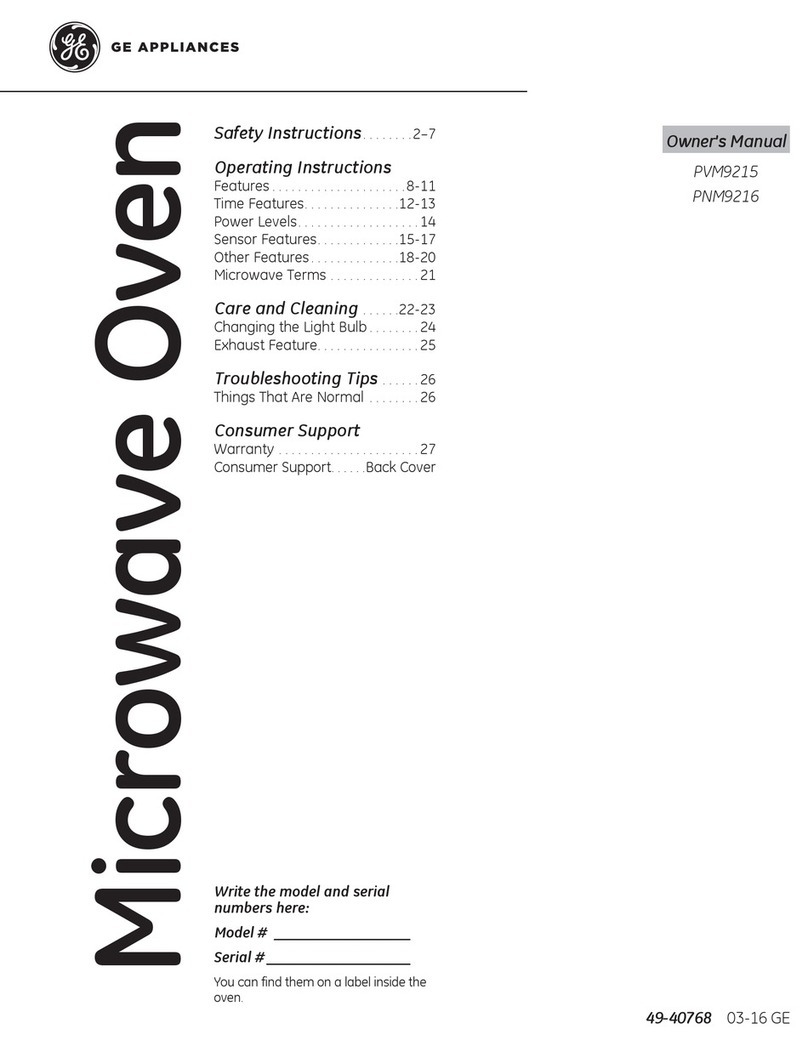
GLOSSARY OF MICROWAVE TERMS
When adapting recipes for the microwave, it is
best to start with a familiar recipe. Knowing how
the food should look and taste will help when
adapting recipes for microwaving. Foods that
require browning or crisp, dry surfaces will cook
better in regular ovens.
● Moist foods, such as vegetables, fruits, poultry and
seafood, microwave well.
● Rich foods, such as bar cookies, moist cakes and
candies, are suitable for microwaving because of
their high fat and sugar content.
● Reduce regular oven cooking times by one-half to
one-third. Check food after minimum time to avoid
overcooking.
● Small amounts of butter or oil can be used for
flavoring, but are not needed to prevent sticking.
● Seasonings may need to be reduced. Salt meats and
vegetables after cooking.
Covering. In both regular baking and microwave
cooking, covers hold in moisture, allow for more even
heating and reduce cooking time. In regular ovens,
partial covering allows excess steam to escape.
Venting plastic wrap or covering with wax paper
serves the same purpose when microwaving.
Venting. After covering a dish with plastic wrap, you
vent the plastic wrap by turning back one corner so
excess steam can escape.
Arranging Food in Oven. When baking in regular
ovens, you position foods, such as
cake
layers or
potatoes, so hot air can flow around them. When
microwaving, you arrange foods in a ring, so that
all sides are exposed to microwave energy.
Stirring. In range-top cooking, you stir foods up from
the bottom to heat them evenly. When microwaving,
you stir cooked portions from the outside to the
center. Foods that require constant stirring will need
only occasional stirring when microwaving.
Turning Over. In range-top cooking, you turn over
foods, such as hamburgers, so both sides can directly
contact the hot pan. When microwaving, turning is
often needed during defrosting or when cooking
certain foods, such as frozen hamburgers.
Standing Time. When you cook with regular ovens,
foods such as roasts or
cakes
are allowed to stand to
finish cooking or to set. Standing time is especially
important in microwave cooking. Note that a
microwaved cake is not placed on a cooling rack.
Shielding. In a regular oven, you shield chicken
breasts or baked foods to prevent
overbrowning.
When microwaving, you use small strips of foil to
shield thin parts, such as the tips of wings and legs
on poultry, which would cook before larger parts.
Arcing. Sparks caused by too much metal in the
microwave oven or metal touching the side of the
oven or foil that is not molded to food.
Prick Foods to Release Pressure. Steam builds up
pressure in foods that are tightly covered by a skin or
membrane. Prick foods, such as potatoes (as you do
before regular oven cooking), egg yolks and chicken
livers, to prevent bursting.
Rotating. Occasionally, repositioning a dish in the
oven helps food cook more evenly. To rotate 1/2 turn,
turn the dish until the side that was to the back of the
oven is to the front. To rotate 1/4 turn, turn the dish
until the side that was to the back of the oven is to
the side.
Basic Microwave Guidelines
Density of Food. In both regular baking and
microwave cooking, dense foods,
such as potatoes,
take longer to cook than light, porous foods, such as
rolls, bread or pieces of cake.
Round Shapes.
Since microwaves penetrate foods
to about one inch from top, bottom and sides, round
shapes and rings cook more evenly. Corners receive
more energy and may overcook. This may also happen
when cooking in a regular oven.
Delicacy.
Foods with a delicate texture, such as
custards, are best cooked at lower power settings to
avoid toughening.
Natural Moisture
of food affects how it cooks. Very
moist foods cook evenly because microwave energy
is attracted to water molecules. Food that is uneven in
moisture should be covered or allowed to stand so it
heats evenly.
Piece Size.
Small pieces cook faster than large ones.
Pieces that are similar in size and shape cook more
evenly. With large pieces of food, reduce the power
setting for even cooking.
Shape of Food.
In both types of cooking, thin areas
cook faster than thick areas. This can be controlled in
microwaving by placing thick pieces near the outside
edge and thin pieces in the center.
Starting Temperature.
Foods taken from the freezer
or refrigerator take longer to cook than foods at room
temperature. Timings in our recipes are based on the
temperatures at which you normally store the foods.
Quantity of Food.
In both types of cooking, small
amounts usually take less time than large amounts.
This is most apparent in microwave cooking, where
time is directly related to the number of servings.
10
